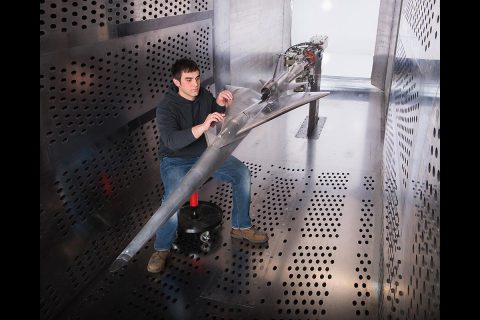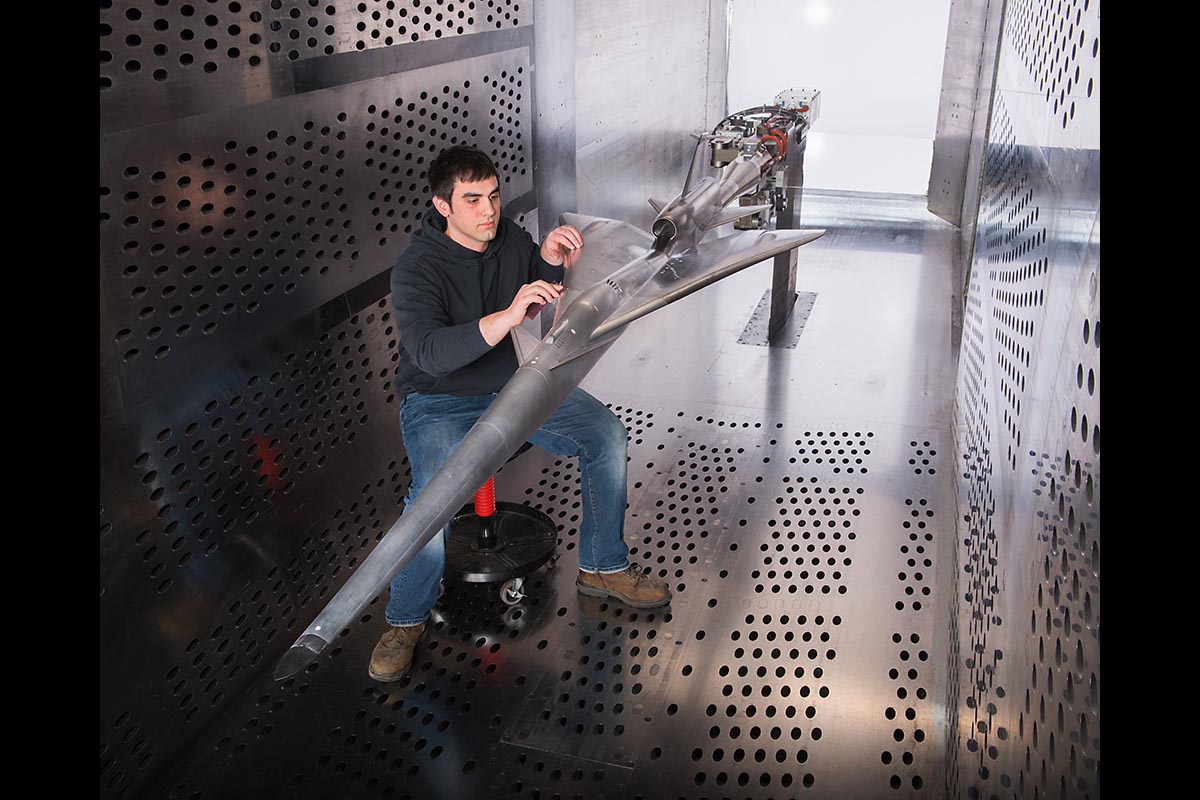Written by Jimi Russell
NASA Glenn Research Center
 Cleveland, OH – Can you imagine flying from New York to Los Angeles in half the time?
Cleveland, OH – Can you imagine flying from New York to Los Angeles in half the time?
Think about it. Commercial flight over land in a supersonic jet would mean less time in-flight; less time in a cramped seat next to your new, and probably unwanted, best friend; fewer tiny bags of peanuts; and more time at your destination.
Couldn’t Concorde do that? Nope. Concorde, which last flew in 2003, utilized 1950s technology, was only supersonic over the ocean and was deemed too noisy to fly over people.

It also burned a lot of fuel and was an expensive ticket. Approximately $15,000 for a round-trip seat in today’s dollars! That makes our wallets hurt.
Ok, so just build a new Concorde with new technology that saves fuel. Well, it’s really not that easy. Since 1973, supersonic flight over land has been forbidden in the United States because of the noise from sonic boom. A new supersonic commercial airplane needs to beat the boom problem and be efficient as well.
That’s what NASA’s Commercial Supersonic Technology Project is trying to do. After years of work, we think we can bring something new to the table that produces acceptable in-flight noise to communities along flight paths. We are ready to prove it, and that is where the Quiet Supersonic Technology (QueSST) experimental aircraft (X-plane) concept being developed by NASA and partner Lockheed Martin comes in.
Here’s the lowdown on the project:
- Although the overall goal is improved quality of life for those on the ground and those in the air, the big step in the near term is to show we can beat the boom. To accomplish this, a unique X-plane, one that uses distinctive shaping – a long nose, highly swept wings, etc. – is being designed. This piloted X-plane will look to prove that sonic booms can be turned into sonic thumps, and eventually help make the case for updating the rule against supersonic flight over land.
- What’s QueSST? QueSST is a preliminary design concept of that unique X-plane. It’s not an airliner. The design relies mostly on computer models to ensure all the pieces will come together for a future real airplane.
- To verify the aerodynamic performance predictions of the fuselage shape, control surfaces and engine inlet the NASA-Lockheed team has built a scale model of the QueSST design for wind-tunnel testing. NASA Glenn Research Center’s 8’ X 6’ wind tunnel was selected for this testing because of its size and unique capability to test at a large range of speeds.
- So, what’s next? NASA will review the test data and complete the preliminary design review. If data is positive and approval is obtained, then a contract for the design, fabrication and testing of a single-seat flight demonstration X-plane could be awarded. Flight testing could begin as early as 2021.



